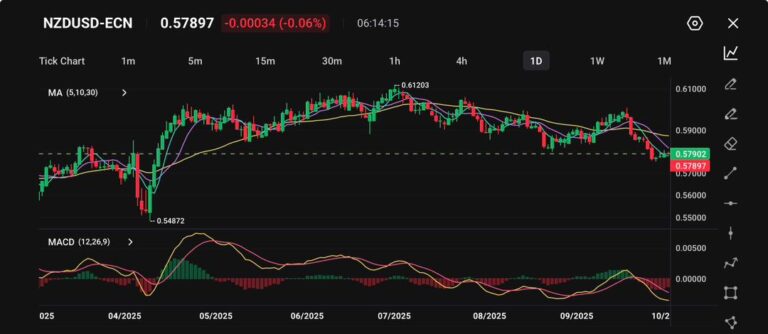The New Zealand dollar lingered around $0.579 on Wednesday, holding steady after modest gains, as the greenback softened on concerns that a potential US government shutdown could be imminent.
The prospect of Washington grinding to a halt is stoking nerves among traders, who worry that vital data, not least September’s non-farm payrolls, could be postponed.
Any such delay would muddy the waters for the Federal Reserve, complicating its guidance ahead of the late-October policy meeting.
Although a dip in the US dollar has provided the kiwi with a brief respite, the currency remains under strain, still trading close to last week’s six-month low of $0.578.
Domestic policy expectations are adding to the drag. Markets are fully pricing in a 25-basis-point cut from the Reserve Bank of New Zealand at its meeting next week.
Futures pricing also reflects around a one-in-three chance of a larger 50-basis-point move, highlighting persistent doubts over the resilience of the domestic economy.
Domestic Outlook
The latest ANZ Bank business outlook survey painted a mixed picture. While headline confidence held firm in September, with a net 50% of firms anticipating better conditions, the optimism stands at odds with the lacklustre pace of underlying growth.
This disconnect leaves the RBNZ facing growing pressure to respond more forcefully.
Technical Analysis
The New Zealand dollar (NZDUSD) continues to struggle, trading at 0.57897, down 0.06%, with price action leaning bearish as the pair slips further below the 0.58 handle.
The Kiwi is being weighed down by persistent USD resilience and weaker demand for risk assets, while domestic economic headwinds and the RBNZ’s cautious stance limit upside potential.
From a technical perspective, NZDUSD has clearly broken below its 30-day moving average, with the 5- and 10-day averages trending lower, signalling strong downward momentum.

The last major swing high was at 0.6120 in July, and since then the pair has been in a steady decline. Immediate support sits at 0.5750, with further downside risk extending toward the April low near 0.5487 if bearish pressure persists.
Momentum indicators confirm the bearish trend. The MACD is deeply in negative territory, with the MACD line staying below the signal line and widening, showing accelerating downside momentum. The histogram also supports this bias with persistent red bars.
Cautious Outlook
In the short term, the kiwi is likely to remain on the back foot unless broader risk sentiment improves or US yields start to ease. A sustained move back above 0.5850 would be required to temper the downside pressure, but for now, any rallies are expected to meet resistance.
Create your live VT Markets account and start trading today.







